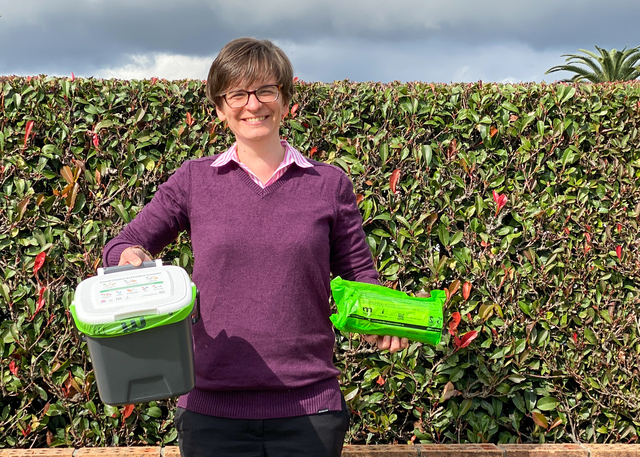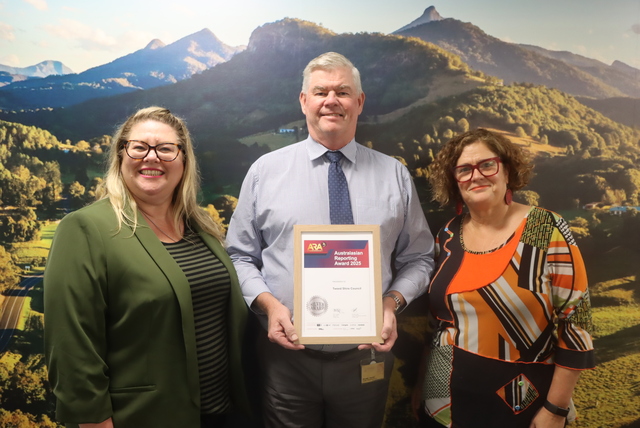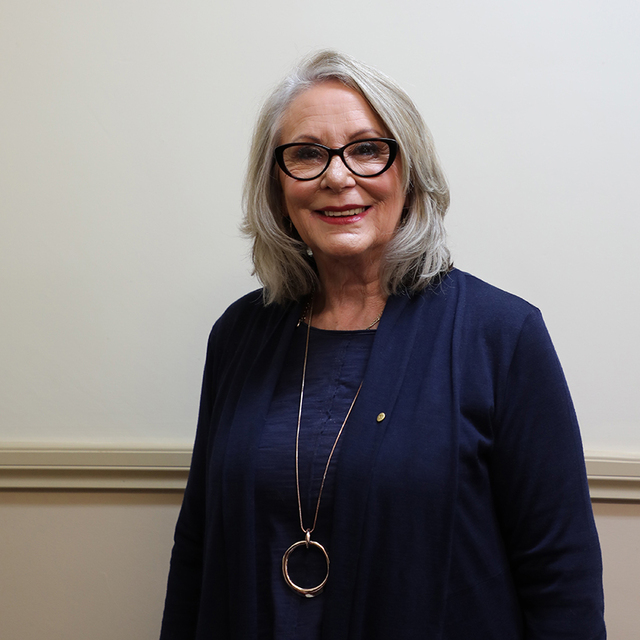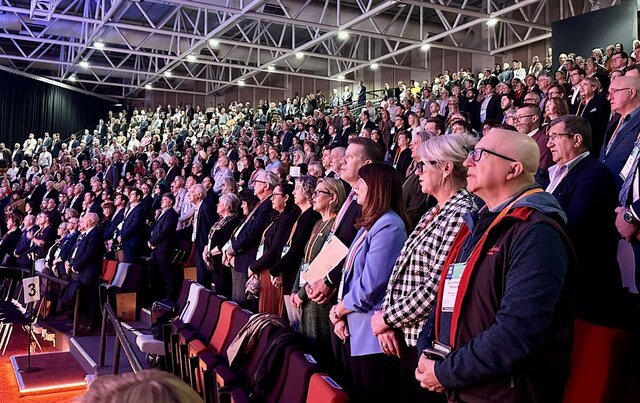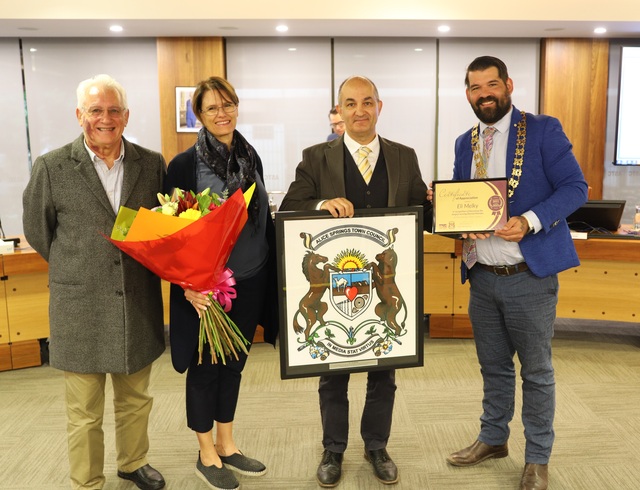A regular feature this month profiling two Councillors from New South Wales.
Mayor Shirley Adams, Grafton City Council, New South Wales
Q. Can you tell us about yourself and how and when you got involved in Local Government?
I became active in community affairs as a teenager helping local and State charities. During the early years of raising a young family I became involved in the Girl Guide Movement, eventually becoming both a Diploma and State Trainer. With my experience in the Movement, I became interested in civic affairs and was elected to Council in 1974. I was an Alderman of Grafton City Council for 13 consecutive years including five terms as Deputy Mayor. I retired in 1987 to concentrate on a wide range of health and community issues and to organise, as Regional Coordinator for the North Coast, the visit of the 1988 Bicentennial Travelling Exhibition to Grafton. In 1989 I was awarded a Medal of the Order of Australia in recognition of my services to Local Government and the Girl Guide Movement, of which I have been a member for over 36 years. I resumed my involvement in Local Government in 1995 with one year as Deputy Mayor and for the past seven years have served as Mayor of Grafton, the first woman to have achieved that distinction in Council’s 143 year history. In 2001 I was elected to the position of Chairman of the Country Mayors Association of NSW, the first woman to achieve that distinction. Recently I was named a Paul Harris Fellow – a Rotary International award ‘in appreciation of tangible and significant assistance given for the furtherance of better understanding and friendly relations among peoples of the world’ even though I am not a Rotarian.
Q. What are some of the unique features of your region and community?
Grafton, incorporated in 1859, is the oldest city on the North Coast of NSW. It is a cathedral city noted for its beautiful tree lined streets, its historic public and privately owned buildings, and its wide river, the Clarence. The river supports a range of water based activities that bring thousands of participants throughout the year for sailing, rowing, skiing, tourist and passive recreation. The Clarence River bridge opened in 1932 and now, on the National Trust register, is the only bridge of its kind in the southern hemisphere, being a double deck design providing for rail, road and pedestrian traffic. The Jacaranda floral festival began in 1935 and is the longest continuously staged floral festival in Australia, held during the last week of October each year. A week of activities involves the whole community and thousands of visitors each year. The Jacaranda blossom is breathtaking. Grafton is also known as the City of Trees because of the great variety of specimens lining its streets. Grafton is a resilient community. Faced with flooding of the Clarence River since settlement, Graftonians have weathered the storm, mopped up and continued to develop the City after numerous floods since 1839. A levee bank has now been constructed to protect the urban settlements on both sides of the river from flooding, and thus allows for development in areas that were previously flood prone. The infrastructure has been well planned to provide efficient community services. Roads are well maintained, water and sewerage services continue to be constructed to a high standard, recreational and sporting facilities are of an exceptionally high standard and the City’s parklands are well maintained and extensively used.
Q. What are the specific Local Government issues that your Council and community are facing?
Grafton is surrounded by Copmanhurst and Pristine Waters Shires. Copmanhurst Shire’s administrative offices are in Grafton and Pristine Waters Shire operates from offices in Grafton and Ulmarra. Maclean Shire, serving the lower Clarence Valley operates from Maclean. The Clarence Valley is served by four Local Government Councils encompassing an overall population of about 50,000. Grafton City Council feels that the Valley is over-governed and that there is a need for restructure to offer better balanced and more effective services to the community. This view is not held unanimously through the Valley, and amalgamation is being resisted. The current record drought is to some degree affecting Grafton as the major retail, commercial and light industrial centre of the region; but taken in context with the National economy, Grafton continues to maintain its momentum as a very stable community and commercial heart of the Clarence Valley. Economic development is being encouraged and the importance of tourism is not being under estimated. As a sporting city we look to encouraging good accommodation and ancillary services for tourists. Our Regional Art Galley and a host of arts and craftsmen and women actively promote their organisations and interests far and wide. All of these interests are generously supported by Grafton City Council, which creates a harmonious relationship, offering a better quality of life for our citizens.
Q. During your term on Council, how have you seen it evolve?
In 1974 the Mayor played a more direct role in the affairs of administration of Council and with the heads of the various divisions of Council. When I returned to Council in 1995 that role had changed with the introduction of the 1993 Local Government Act. The position of General Manager replaced the role of Town Clerk and the elected Members of Council became a separate entity. The General Manager was given complete autonomy to direct the administration of Council’s affairs; and the Mayor’s role was directed to managing the affairs and concerns of the community’s elected representatives, and to offer direct public access to Local Government issues. Councillors are now more involved in policy determination and less involved in the day-to-day management of the Council. Grafton City Council is of the people and for the people. It prides itself in being non-political and therefore not influenced by outside forces. The Council resolved to reduce public representation from 12 to nine Councillors in the belief that nine Councillors was a fair and reasonable representation for a population base of 17,000 persons. It also benefited by reducing administrative costs to the ratepayer. I believe that Council benefits from the annual election of its Mayor from the Councillors rather than via a popular election for a four-year term. Performance in the position is assessed annually by your fellow Councillors. It is a measure of your effectiveness in leading the team and reflects your level of communication and performance in public affairs with the ratepayers.
Q. How do you think Local Government can strengthen its force in the political landscape of Australia?
I strongly believe that representation in Local Government should be non-party political in country areas. Communities in the country interact as singular units not to be influenced by outside forces. They want to have the choice to elect their representatives free of political influence. Local Government should be grass roots administration of local affairs. Those affairs do of course include most facets of State Government control and therefore involve political decisions and directions in local affairs; but the people’s representatives in Local Government should represent the people rather than political parties. We have to respect the roles of our political representatives but not recreate those roles at a local level. State Governments of either persuasion seem to pay only token respect to the role of Local Government even though Local Government is becoming increasingly burdened with implementing State policies and strategies. These responsibilities in turn have led to greater pressure and cost burdens being placed on local administration. This has led to a need to consider the amalgamation of Councils into more effective authorities to cope with the additional impositions being placed on them by State Government.
Q. Any last words?
I am honoured to have given a lifetime of service to the community and to have served in Local Government for 21 years. My hope is that more women will take up the challenge and offer themselves for public service in Local Government in the future.
Lord Mayor John Tate, Newcastle City Council, New South Wales
Q. Can you tell us about yourself, and how and when you first got involved in Local Government?
I stood for election in the late 70s to assist an acquaintance in a position that was not winnable for me, but I became enthralled with Local Government and made up my mind to have a serious run at being elected. I realised this was a way to repay the community for the benefits I had enjoyed as a person. I was elected in September 1980 and have been a Councillor ever since, and was elected as Lord Mayor in the 1999 election.
Q. What are some of the unique features of your area and the Newcastle community?
Strong community spirit, which has been a key feature for many years, arising out of some of our first industries such as the maritime industry and coal mining. Both of these industries have a traditional work ethic of looking out for your workmate. Newcastle has developed from small but close knit communities centred around coal mines, such as Wallsend, Merewether and Lambton, and that community spirit was demonstrated through sporting competition between those suburbs, who had their own Councils. In 1939 all of these smaller Councils joined to form the Greater Newcastle Council. We are a port city at the head of a very rich Hunter Valley, which produces agricultural products as well as coal. Newcastle and Hunter have been the engine room for NSW, filling the demands of the greater Sydney metropolitan area. This has enabled Newcastle to become the sixth largest city in Australia.
Q. What are some of the specific issues your Council and community are currently facing?
Newcastle is currently experiencing a transition. It is about bringing our City into the 21st century. It is about creating a vibrant City focused on tourism and jobs, maintaining and improving the quality of life for our residents and visitors, a City that attracts, and provides a high level of amenity for its citizens. Creating new jobs for our City is an issue we are facing; jobs that relate to a modern city. Manufacturing in Newcastle has decreased, but we have experienced job increases in areas such as education, tourism and research. We are becoming very much a domestic city: people are moving back into the CBD to enjoy the inner city lifestyle.
Q. During your time on Council, how have you seen your Council evolve?
Newcastle City Council of today is more focused on strategic planning.
A Councillor’s role has changed over the years and is more orientated towards policy. There was a time when a Councillor’s main jobs focused on rates, rubbish and roads. The challenge facing the modern day Councillor is to be able to take a strategic view, to have a plan in place to achieve the goals that you set out, yet to still remain available and concerned about those things that affect the community such as rates, rubbish and roads.
Q. How do you think Local Government can strengthen its force in the political landscape of Australia?
I think Local Government can demonstrate its important and unique position in the nation by being successful in its role. We must continue to spend the ratepayers’ money efficiently. There is no doubt in my mind that Local Government can deliver services at a lower cost than State or Federal Government, but we need to work in partnership with both levels of Government to achieve that. State and Federal Governments need to understand the unique advantages that Local Government can produce. This requires respect for each sphere of government and a willingness to work together. This will produce a good result for our communities. State and Federal Governments cannot be effective unless they embrace the importance of Local Government.


